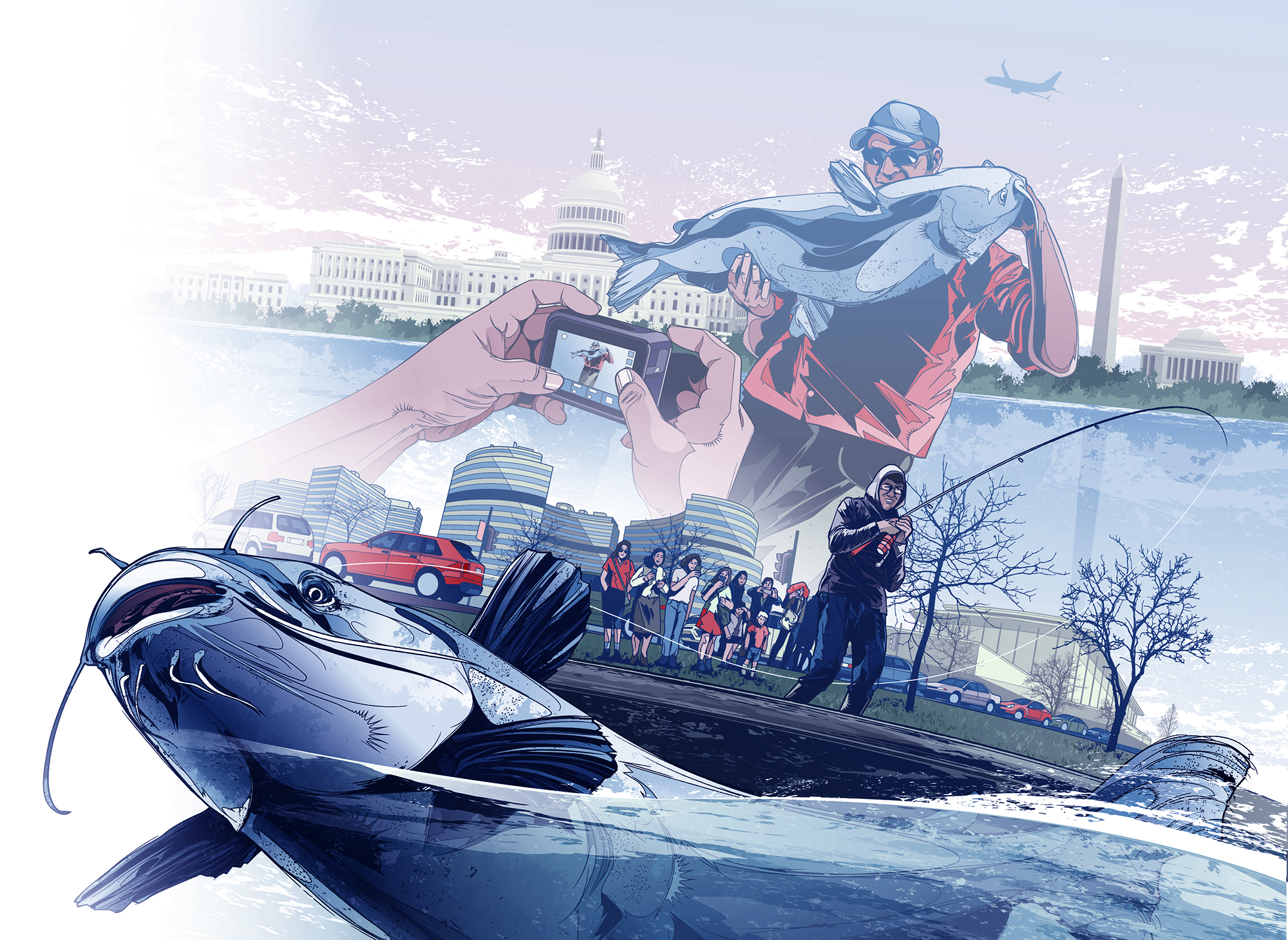THE BRAKES locked up and we swerved hard. Deep in my gut, the sausage McMuffin and coffee I ingested somewhere in Maryland sloshed in a wave of grease and dairy, worsening an already urgent unanswered call of nature. Chris McIntee’s ’07 Honda CRV thumped over a low curb and came to an abrupt stop on the triangular sliver of dirt and crash barricades separating Interstate 395 from the offramp leading toward Capitol Hill. On both sides of us, cars whizzed by in an unbroken stream of Monday morning commuter hell. McIntee put his flashers on and started playing with his phone.
“I told you that as soon as we got into D.C. Google Maps would get corrupt,” he said with a laugh. He spoke the truth. The second we hit the city limits, the Google assistant lost her mind, rerouting every few seconds, causing McIntee to bob, weave, jockey, and second-guess her instructions amid what is arguably the most horrific rush-hour traffic on the East Coast in one of the most confusing cities to navigate. By her estimation, we were only 2 miles from our destination on the Potomac River, but 2 miles can feel like 200 in D.C. When McIntee was satisfied with GPS route version 12.0, he waited for a window more than two car lengths long, hit the gas, and jumped the curb again onto the offramp. I prayed there was a toilet where we were going, and that within short order the fishing portion of this suicide catfish run to beat the winter blues—both literally and figuratively—would finally commence.
Daily Grind
It started in Philadelphia, at 5 a.m. sharp. I was barely awake when I found McIntee loading his car. His neighborhood is a mix of tightly packed row homes and small single homes that make up the northwest Philly suburbs. The fog, illuminated orange by the lights from not-so-distant downtown, made everything wet and the air thick. This was mid-February 2018, and by all counts, McIntee and I should have been layered up from thermals to mittens. I must have rechecked the weather 20 times out of total disbelief before committing to shorts. It would be a record high today, breaking 80 degrees in both Philly and D.C. In many ways it was a welcome fluke of nature, but in others it made the mission feel less hardcore.
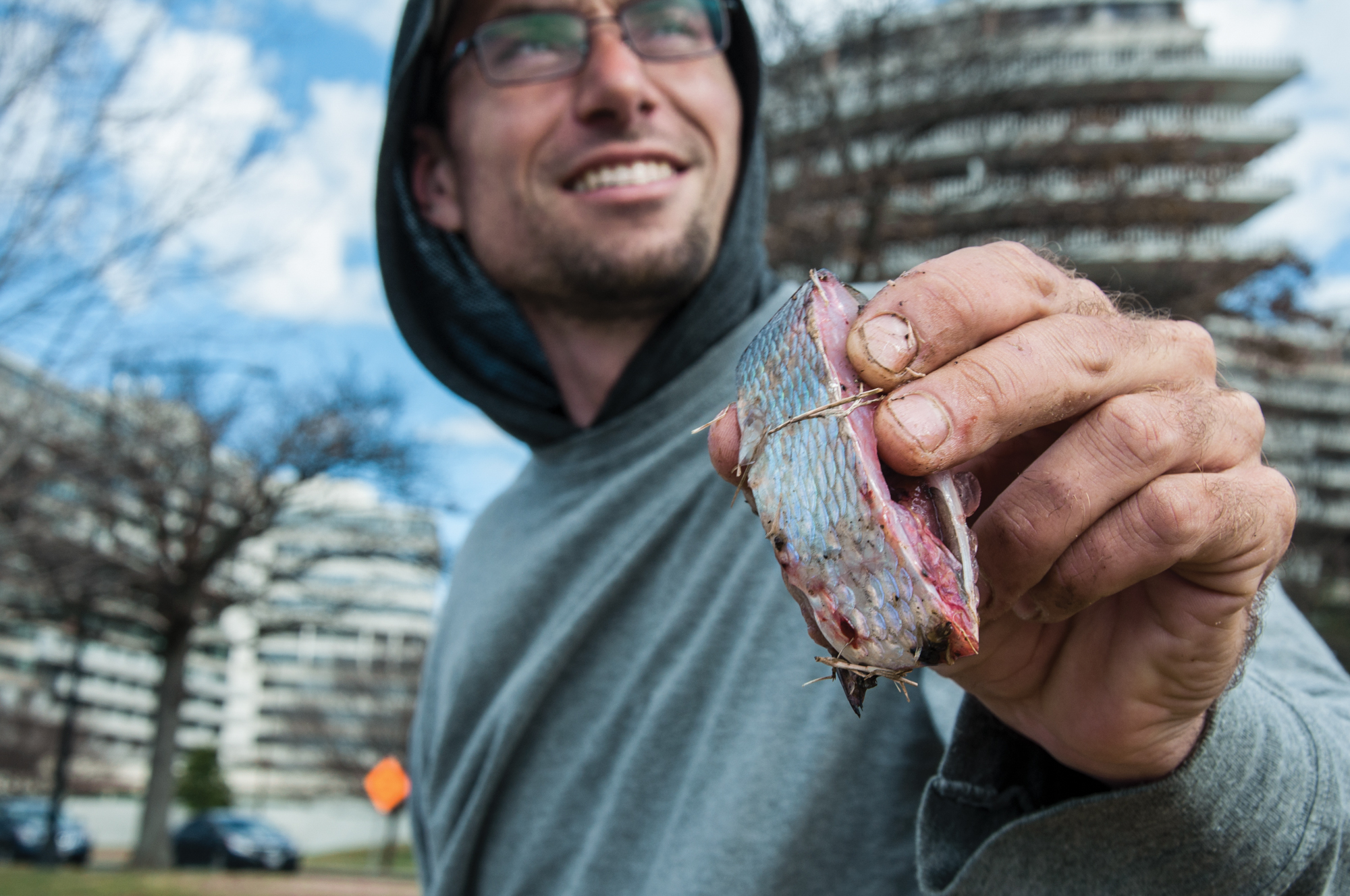
If the idea of suffering through Philadelphia, Baltimore, and Washington, D.C., traffic twice in a single day for a few precious hours of fishing sounds nuts to you, I’d call you normal. McIntee, 29, is not normal. On YouTube, he goes by the name Sea-Money. His channel has nearly 125,000 subscribers. His videos routinely score half a million views, and several have surpassed 1 million. Thanks to YouTube’s advertising partnership program, McIntee cleared about $32,000 in 2017. In the simplest terms, every time an ad plays within one of his videos, McIntee gets paid. He’s not married and he has no children, so while that salary might not make him rich, it allows him to cover rent and bills, and call fishing his job. To keep the checks coming, he needs to keep the YouTube machine fed, and in winter, with big-fish opportunities scarce in the Philly area, a four-hour, one-way jaunt to D.C. to bow up on some blue catfish doesn’t faze him. Having seen the results of his past winter runs online, and being racked with cabin fever myself, I signed on. The difference between us is that tomorrow, he can sleep it off until noon, but my job and kids won’t afford me that kind of recharge.
McIntee had spent the previous day snagging enough gizzard shad to fill a cooler for our quest, which was now one of the many heavy things we had to drag from the parking lot to a choice spot near the Kennedy Center. We lugged sand spikes, rods, bridge nets, folding chairs, and 20 pounds of lead sinkers along Potomac Parkway, where traffic lurched. By the time we rigged up and got the first chunks of shad launched over the railing that ran along the wall we were atop, it was nearly 10:30 a.m. The lack of sleep from the night before was already gnawing at me. More caffeine wasn’t the solution. The pick-me-up I needed came from McIntee, who suddenly tapped the record button on the GoPro strapped to his head.
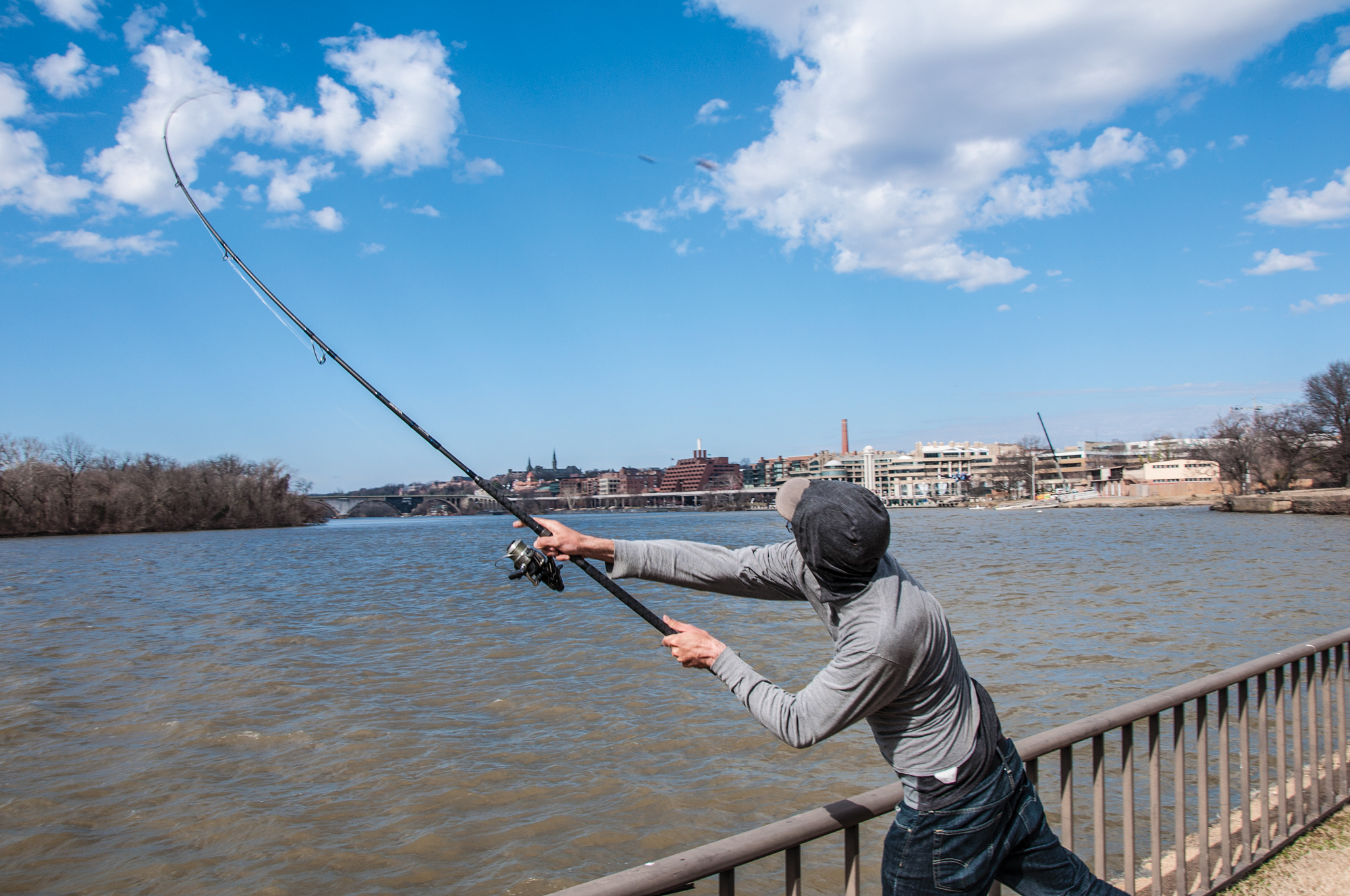
“Here we go,” he said, springing from his chair. The rod to his left bucked twice and then slowly began bending toward the river without stopping. “We’re on!”
We’d been soaking baits for less than 15 minutes.
Catching Heat
Blue catfish are invasive in the Potomac River, which means they’re not eagerly promoted as a target for tourist anglers. That’s one reason why the fishery isn’t as popular here as it is in the James River and Lake Gaston just a few hours to the south. The fact that in those places, 50-plus-pound fish are common also doesn’t help. On the Potomac, while there are very strong numbers of blues, true tanks don’t come as easily or as often. A few guides have set up shop in the Capitol vicinity, but for the most part, the Potomac’s blue cats are for locals only, not a huge number of whom fish in the rat race of D.C. proper, let alone in the dead of winter. That’s a mistake, because high, cold water often pushes the fish shallow, making them easier targets for the shore-based angler. The significant narrowing of the Potomac through the heart of the city also concentrates the cats, upping the odds that your bait will get hoovered even more. McIntee figured all this out a few years ago. The biggest cat he’s wrenched to the bank here weighed 39 pounds. His lofty goal every visit is to break 50. The first cat he caught this morning weighed only 16 pounds, but it was a good start. As I snapped a few pictures of the catch, I watched one of my rods arch toward the rail over McIntee’s shoulder under the strain of what would turn out to be a 10-pounder. In the next hour, we’d miss a few more hits, lose a handful of rigs, and land a few more cats in the 8- to 12-pound range.
Within that same hour, it seemed all of D.C. emerged from hibernation. The bare trees, brown grass, and muddy Potomac said February, yet you’d swear it was June. People jogged and biked by wearing skimpy Spandex outfits. Every vehicle on the road had its windows down, the sounds of hip hop, jazz, and classic rock mixing with the constant cacophony of military helicopters and low jets roaring into Reagan Airport. In no time, McIntee and I became a lunch-hour attraction. Everyone from cops to students to executives couldn’t help but pop over for a chat. They gawked at our amassing pile of gizzard shad heads bloodying up the dead grass. They regaled us with tales of fish they’d caught with their uncles and boyfriends while on vacation here, there, and everywhere during the months when 80-degree temperatures are the norm. At one point, a young Hispanic courier on a bike made a violent U-turn to come inspect a 10-pound cat we’d just landed.
“Yo, could I take a picture for Instagram?” he asked. I told him to fire away.
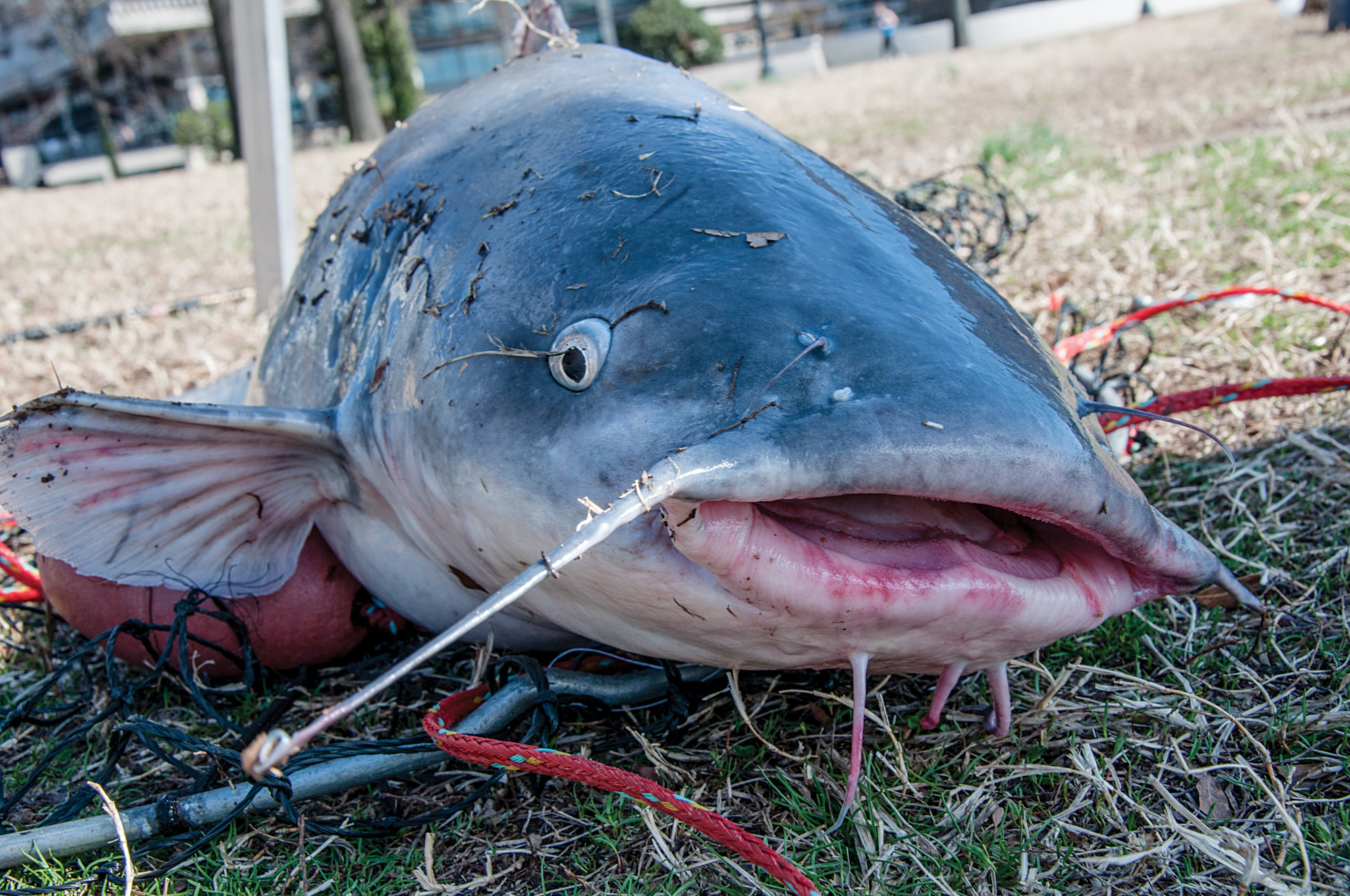
I’m pretty good with small talk and generally played along. While McIntee can wax philosophical on fishing with real fishermen for hours, I could tell that he wasn’t totally into being a spectacle. It was stifling his work. What people love about his videos is that he essentially takes viewers along on an entire fishing trip practically unedited, whether it’s an exploratory trek to a new spot or revisiting a favorite location. With a camera rolling on his head, he narrates everything, and something about his honesty and delivery, whether in a good, bad, or total skunk situation, resonates with his fans. In a Sea-Money video, you might see him stick a late-night Philly flathead in an unsavory part of town. You might see him step on a rusty nail and hobble back to his car so he can speed off to Urgent Care. Thanks again to his lack of being tied down, you might see him pitching jigs to snook off a Florida bridge or jacking lake trout on the ice in Upstate New York. What you won’t see are many other people. Low key is McIntee’s shtick. Even when he’s in a popular area, he often finds a way to skirt the masses and, most of the time, still catch fish. Some trusted fishing buddies will make guest appearances, but even when a crew is involved, they tend to be on a boat or fishing on foot in lesser-known haunts.
Read Next: How to Be a Fish Bum: These 6 Fishermen Are Living the Dream
“A view on YouTube isn’t worth nearly as much as it was when I first started posting videos in 2011,” McIntee told me during a lull in bites and spectators. “You kind of had to get in at the right time. These days it’s very difficult for new people to make any money with fishing videos because the market is so saturated.”
The funny thing is that while earning north of $30,000 in a year for doing nothing but fishing and putting videos online might make many people green with envy, the reality is McIntee’s profits are meager compared to other fishing YouTubers, most of whom got in around the same time he did, long before everyone with a rod, reel, and camera wanted a piece of the action—or more accurately, long before they even knew there was a piece of the action to be had. Uncle Sam takes his cut of McIntee’s earnings, as he does from any plumber, teacher, or desk jockey who hates his job. Likewise, because Uncle Sam recognizes this as McIntee’s profession, every bag of rubber shads, camera, spool of line, and pack of hooks he buys is a tax write-off. Every mile driven for this very trip would be written off too.
Cold Truth
Our first spot eventually dried up, so we decided to finish the day across the river at the foot of the Pentagon, directly across from the Washington Monument. McIntee had been successful there before, but as we schlepped all our gear back to his car, a current break along the same wall we’d been fishing caught my eye. I had to try it, so we dropped our kit and opted for a quick 10-minute soak. Only three of those minutes passed before one of my rods bent so hard, it would have been pulled from the sand spike had I not been close enough to grab it. This was the only fish we’d hooked that peeled drag and made every attempt to glue itself to the bottom. McIntee ran to get his bridge net ready. I cringed every time I felt the sinker hang in whatever hunks of line-cutting rock, rebar, and concrete were scattered below. When the cat broke the surface, we both lit up.
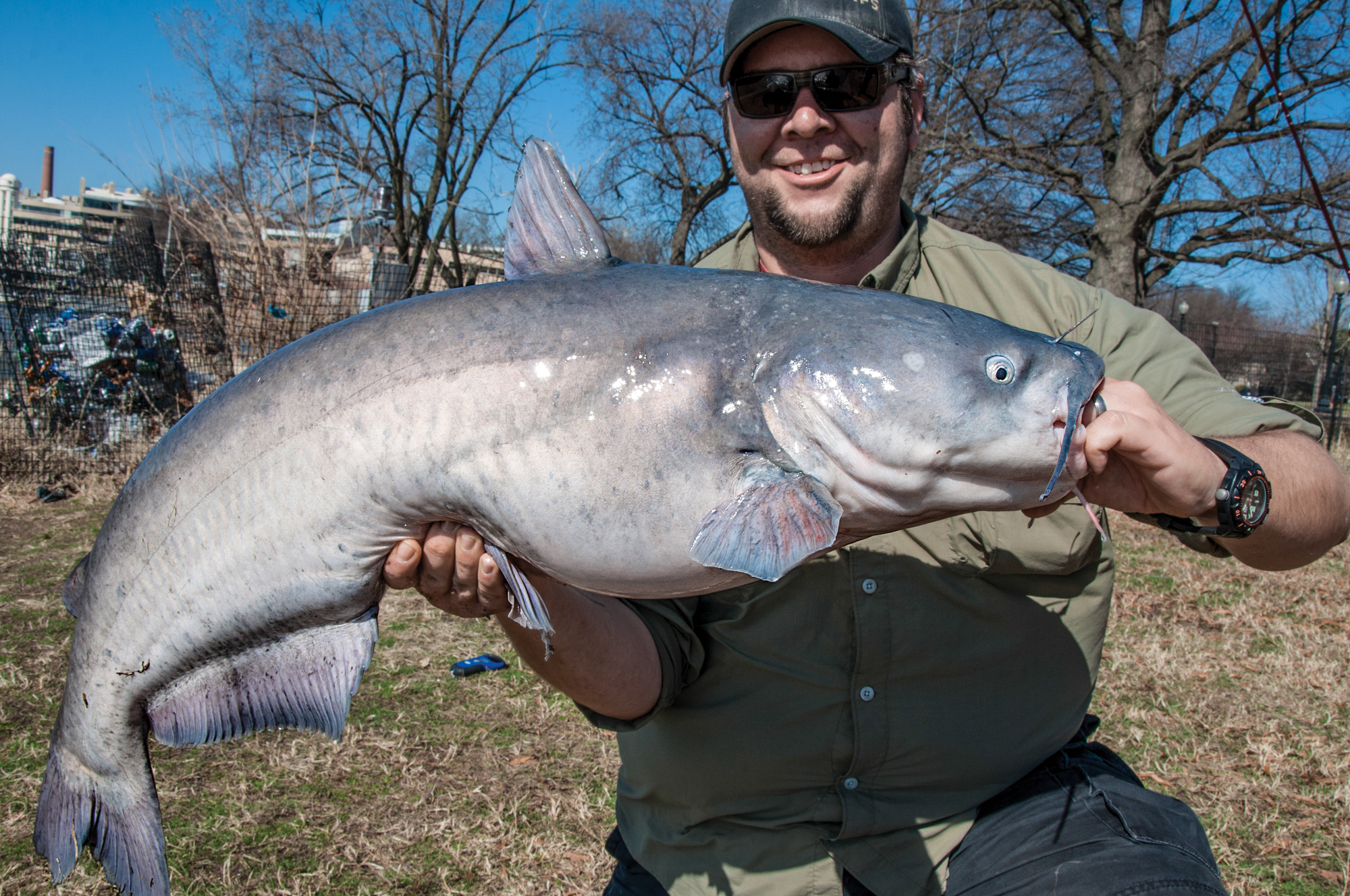
“Yeah, Joe! That’s a good one,” McIntee belted out as he struggled to position the dangling net so I could guide the fish into the hoop. There was a lot of thrashing and a few tense seconds until the eagle was landed. McIntee heaved the 30-pounder 12 feet up to dry land, and the crowd went wild. I did too. McIntee was genuinely pumped for me, but I also knew from watching his videos that he always sets his expectations high. He wants the biggest, the baddest, and the most. For me, not striking out would have been enough, so a 30-pounder was beyond sweet; for him, one 30 and a few smaller fish made this a mediocre day at best.
It turned out we’d be stuck with mediocrity. After hooking a few smaller cats at our wild stab spot, we spent almost 30 minutes relocating to our next destination that, as the crow flies, was less than 2 miles away. Vibes were bad from the outset. Two anglers with 12 rods were fishing McIntee’s choice real estate, so we had to settle for the next closest piece of open bank. Within minutes of sending out baits, a center-console called Take 2 came ripping along the shoreline right over our lines, pulling a wakeboarder in a full wetsuit across the frigid, coffee-colored Potomac. It was so bizarre that all we could do was laugh. In an hourlong soak, we never got a tap, and as we packed up, a young bearded guy wearing a tight flannel shirt, skinny-leg khakis, spotless Clarks boots, and horn-rimmed glasses showed up with a couple of rods and posted not far from us. From his mod sling pack he extracted a pair of rubber gloves, which he put on before removing a gizzard shad from a ziplock bag. I was sure he caught me staring, because he dropped his bait and started walking my way with conviction. Then he blew by me without so much as a nod and charged McIntee.
“Excuse me. Are you Sea-Money?” he asked. McIntee cordially confirmed. The hipster gushed: “I love your videos, man. It’s really great to see you fishing here.”
Read Next: Shallow Water Tactics for Catching Super-Sized Blue Catfish
We rode home with the windows down that evening. When the stop-and-go traffic was at a standstill, we listened to the drone of peepers chirping away in the Maryland woods. Peepers in February. It was enough to convince you that winter was over for good. Little did we know that in less than two weeks, the first of four Nor’easters would kick off what would be the most destructive, snow-packed March the Northeast had seen in decades. I thought about that taste of summer a lot over the next month as I froze with no power for five days and dealt with the aftermath of a tree falling on my house. While I haggled with insurance adjusters, McIntee pounded local walleyes. While I negotiated with contractors, McIntee stuck some nice muskies with his camera rolling. Both of us were just trying to keep the lights on.
This story originally ran in our Winter 2019 issue. Read more OL+ stories.
